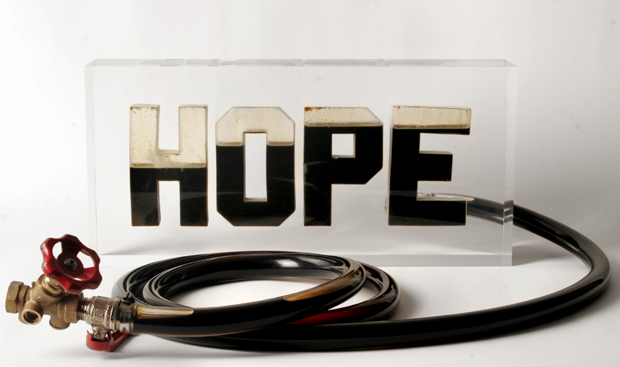
A sticky situation - the artist's response to one of 2010's defining disasters
Following the publication of BP's report on the Deepwater Horizon oil spill, Alastair Smart looks at the relationship between oil and art
When one thinks of art’s most powerful responses to catastrophe, Picasso’s Guernica (1937) immediately springs to mind. Swiftly followed by Goya’s The Disasters of War (1810-20).
But what of today? How have artists responded to one of 2010’s defining disasters, the Deepwater Horizon oil spill in Louisiana? Perhaps, of course, it’s too soon to say. And as the spill isn’t a disaster on anything like the scale of Guernica (just as there isn’t an artist alive with anything like the genius of Picasso), one obviously doesn’t expect a masterpiece. But the initial responses make for interesting viewing, nonetheless.
The most widely reported were the ‘performance art’ pieces carried out at Tate Britain (in June) and the British Museum (in July) by activists from the Culture Beyond Oil collective. Miffed at BP’s longstanding sponsorship of both museums, they spilled various litres of a black, oil-like liquid in protest. Their actions raise all sorts of pertinent questions about how the nation’s art institutions can and should fund themselves in these times of massive government cut-backs - though they’re probably best considered political protests with an artistic dimension rather than art-works per se.
Perhaps unsurprisingly, the quickest artists off the mark were local ones, angrily stirred into action after seeing the ecological disaster at first hand and watching the ruin of their friends’ and neighbours’ livelihoods. Most potent of a whole host of Louisiana-made works was the minimalist installation by Mitchell Gaudet at Longue Vue House in New Orleans.
He placed 53 identical oil barrels in a row across the neoclassical mansion’s pristine back lawn, the work drawing its strength from sheer incongruity. The barrels’ combined capacity matched the amount of crude oil that was leaking into the Gulf every 15 minutes at the height of the crisis. ‘I’m not someone who thinks art should confuse or confound,’ Gaudet said, aware that when it comes to resonant political art, less is very often more.
Yet, now a little time and anger has passed, and the leak finally been plugged, artists seem to be taking a very different, less political tack. The latest trend is to savour, quite unashamedly, the intrinsic beauty of oil, in all its mighty black resplendence; to luxuriate in, rather than protest at, its spill. New York’s Spencer Tunick - famous for his mass, nude photo-shoots - for example, covered scores of volunteers in black paint at this summer’s Big Chill festival in Hertfordshire. By all accounts, it made for a sumptuous nod to all the Gulf creatures that ended up similarly blanketed in black stuff.
More provocative still was the cover shoot for the September issue of Italian Vogue. In it, an oil-smeared, mermaid-like model can be seen coughing up black liquid; lying prostrate on oily rocks; and tangled in fishing nets on an oily shore. The magazine has been inundated with complaints of tastelessness, prompting this swift and highly telling response from its editor-in-chief: ‘There [was] nothing political about the shoot, just visual’.
One awaits with interest a reaction to the BP spill by a patently political artist like Russia’s Andrei Molodkin, whose sculptures infused with crude oil question the commodity’s uneasy relationship with democracy and capitalism in the West. For the time being, though, many artists seem to be preferring a more sensual response, revelling in oil’s devastating allure and noirish indelibility.
Alastair Smart is the Arts Editor for The Sunday Telegraph